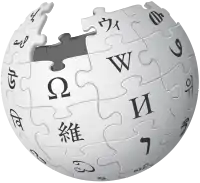Feynman diagram
English
WOTD – 11 May 2018
Pronunciation
- (Received Pronunciation, General American) IPA(key): /ˈfaɪnmən ˈdaɪəɡɹæm/
Audio (AU) (file) - Hyphenation: Feyn‧man dia‧gram
Noun
Feynman diagram (plural Feynman diagrams)
- (physics) A pictorial representation of the interactions of subatomic particles, showing their paths in space and time as lines, and their interactions as points where lines meet.
- 1950 February 15, Robert Karplus; Norman M[yles] Kroll, “Fourth-order Corrections in Quantum Electrodynamics and the Magnetic Moment of the Electron”, in Physical Review, volume 77, number 4, Lancaster, Pa.: Published for the American Physical Society by the American Institute of Physics, ISSN 1536-6065, OCLC 832790150, page 536:
- Feynman diagrams for the fourth-order radiative corrections to the scattering of an electron by an electromagnetic field.
- 1967 April 3, Betty L. Oberholtzer, Publications of the National Bureau of Standards: Published by NBS July 1960 through June 1966; Published by Others 1960 through 1965 (with Subject and Authors Indexes) (National Bureau of Standards Supplement to Miscellaneous Publication; 240), [Washington, D.C.]: National Bureau of Standards, United States Department of Commerce, OCLC 233090333, page 145:
- The symbolic representation of Maxwell's equations is introduced to make it easier to survey the whole subject and to formulate the equations. The Feynman diagram method is applied to the computation of the correlation of the fields at different points in space to any order of approximation.
- 2015, Tony Hey; Gyuri Pápay, “Preface”, in The Computing University: A Journey through a Revolution, New York, N.Y.: Cambridge University Press, →ISBN, page vii:
- Among physicists, Feynman is probably best known for Feynman diagrams, the work that brought him his Nobel Prize in 1964. The diagrams constitute a computational tool kit that enables physicists to make sense of not only Quantum Electrodynamics, the theory that underpins electricity and magnetism, but also of the relativistic quantum field theories believed to describe the weak and strong interactions of elementary particles.
-
Translations
pictorial representation of the interactions of subatomic particles
|
|
Further reading

This article is issued from Wiktionary. The text is licensed under Creative Commons - Attribution - Sharealike. Additional terms may apply for the media files.
